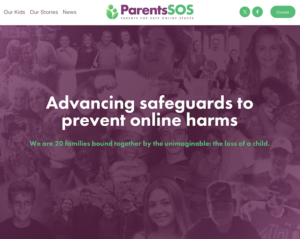A recent Los Angeles Times’ article reveals that teachers across America must compete with students’ phones for attention. Matt Miles, a high school teacher from Fairfax County, Virginia, says the problem is getting worse: “Whereas 5 years ago, I could quietly ask the one rebellious student to put his or her phone away with no real interruption to class, doing that today would require multiple conversations with a majority of my class.”
The push for students to use phones while at school, and even during class, comes from this generation of preteens and teens who — as illustrated by the recent documentary Screenagers — struggle to stop playing with their phones. Adding fuel to the fire are tech pundits who claim that smartphones provide learning opportunities for children. Parents, too, may want to communicate by phone with their kids throughout the school day.
But new research is questioning the wisdom of allowing phones in school, as studies reveal this practice is putting students’ learning and safety at risk.
Distracted Learning
There’s no doubt that smartphones have remarkable capabilities which, in theory, could promote student learning. But the truth is that kids — in spite of the best efforts of parents and teachers — use their phones primarily to access digital amusements. A Kaiser Family Foundation report says: “The transformation of the cell phone into a media content delivery platform [has]… facilitated an explosion in [entertainment] media consumption among American youth,” including TV and video games.
It’s therefore not surprising that a recent London School of Economics study found that schools which ban the use of phones experienced a substantial improvement in student test scores, with the researchers concluding that phones “can have a negative impact on productivity through distraction.” Researchers found that phones hurt vulnerable students the most. Study co-author Dr. Richard Murphy, an assistant professor of economics at the University of Texas, reports: “Allowing phones into schools would be the most damaging to low-achieving and low-income students, exacerbating any existing learning inequalities.”
Research on college students (average age 18) in a simulated classroom reveals how phones hurt learning, as students who did not use their phones “wrote down 62 percent more information in their notes, took more detailed notes, were able to recall more detailed information from the lecture, and scored a full letter grade and a half higher on a multiple choice test than those students who were actively using their mobile phones.”
The Illusion of Safety
Understandably, some may believe that children’s safety is improved if parents and children can reach one another by phone during the school day. However, in order to get a message from their parents, students must constantly monitor their phones, even during class. This constant phone and online use is now recognized as posing risks for children. Why? Because research isrevealing that kids who spend more time online are more likely to be involved in cyberbullying than kids who spend less.
Schools therefore inadvertently increase the chances that kids will be cyberbullied at school through open phone policies. Marc Vincenti, a retired English teacher from Gunn High School in Palo Alto, California, witnessed how students using phones during school increases their risks of being victimized. Vincenti asked one of his students, who appeared troubled, if she was okay. She responded, “I’m so sorry, but on my way to your class I got a text six pages long from my boyfriend’s old girlfriend saying what a slut I am.”
We should be doing everything we can to limit cyberbullying, especially during school hours, as research shows that it increases the danger that kids will skip school or consider suicide. Schools will protect students’ safety by having them keep their phones off in backpacks from morning bell to last. If parents or children need to reach one another, the school office can be used — a policy that has worked well for decades.
The Need for Leadership
Schools will clearly promote their students’ academic success and safety by limiting the use of student phones during school hours. Presently, most schools leave it to teachers to manage phone distractions in their own classrooms. But this piecemeal approach has left teachers with inadequate support to confront the difficult and potentially unsafe task of limiting disruptive phone use by defiant students. In a recent New York Times’ article, teacher Ed Boland acknowledges, “I just wish somebody told me how to get a cellphone out of a kid’s hand.”
School leaders and teachers therefore need to work together to help students and parents recognize the substantial benefits of keeping phones off during school. Such teacher-leader cooperation will also ensure that phone limits extend to lunch and passing periods to protect students.
Principal Anita Berger of Banneker High School, a Washington, DC magnet school, is providing strong leadership on student phones, particularly considering the challenges faced by her students. Banneker’s student body is 85 percent black, a group of teens who — according to a recent Common Sense Media report — nationally spend almost twice the amount of time each day using phones when compared with white children (4 hours, 11 minutes to 2 hours, 12 minutes). Black students also tend to score lower academically than white children. So, Banneker’s students would especially benefit from school phone limits which, according to the London School of Economics phone study, particularly help lower achieving students.
Principal Berger and Banneker have done just that, with a rule that students don’t use phones during the school day. This has helped Banneker students excel, as the school ranks in the top 2 percent on The Washington Post’s list of America’s most challenging high schools, and nearly 100 percent of its graduates are accepted into post-secondary institutions. “Although we know there are many benefits to mobile technology,” Berger says, “the distractions outweigh the benefits.”
Banneker’s phone limits also promote a supportive and engaging school community. “We do not have social media drama, and students actually interact with one another during lunch,” Principal Berger adds. Schools across America can learn a lot from Banneker.
Richard Freed
Psychologist, author, and speaker on parenting in the age of digital technology
Originally published Huffington Post 04/12/2016 – republished with authors permission.



